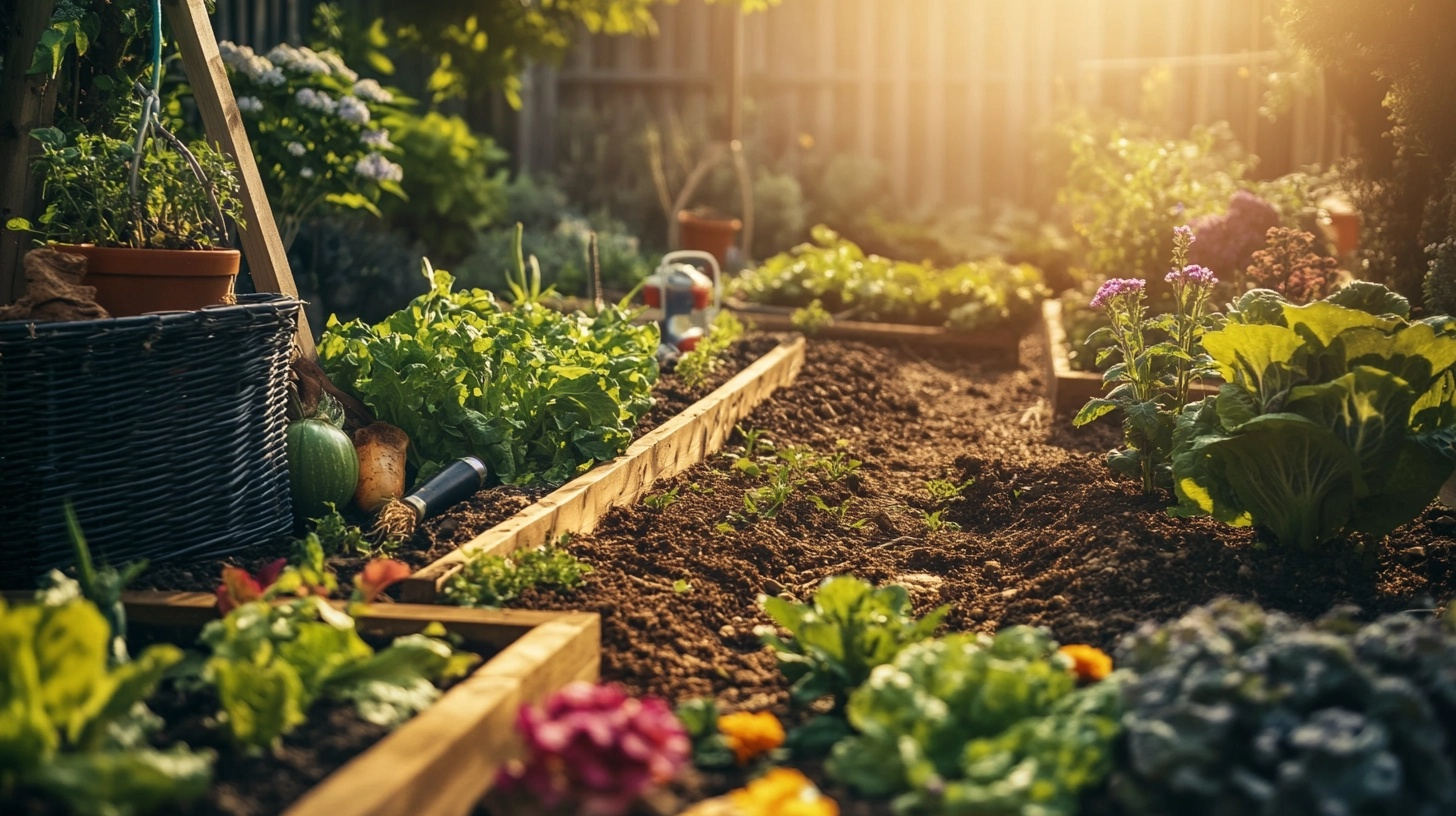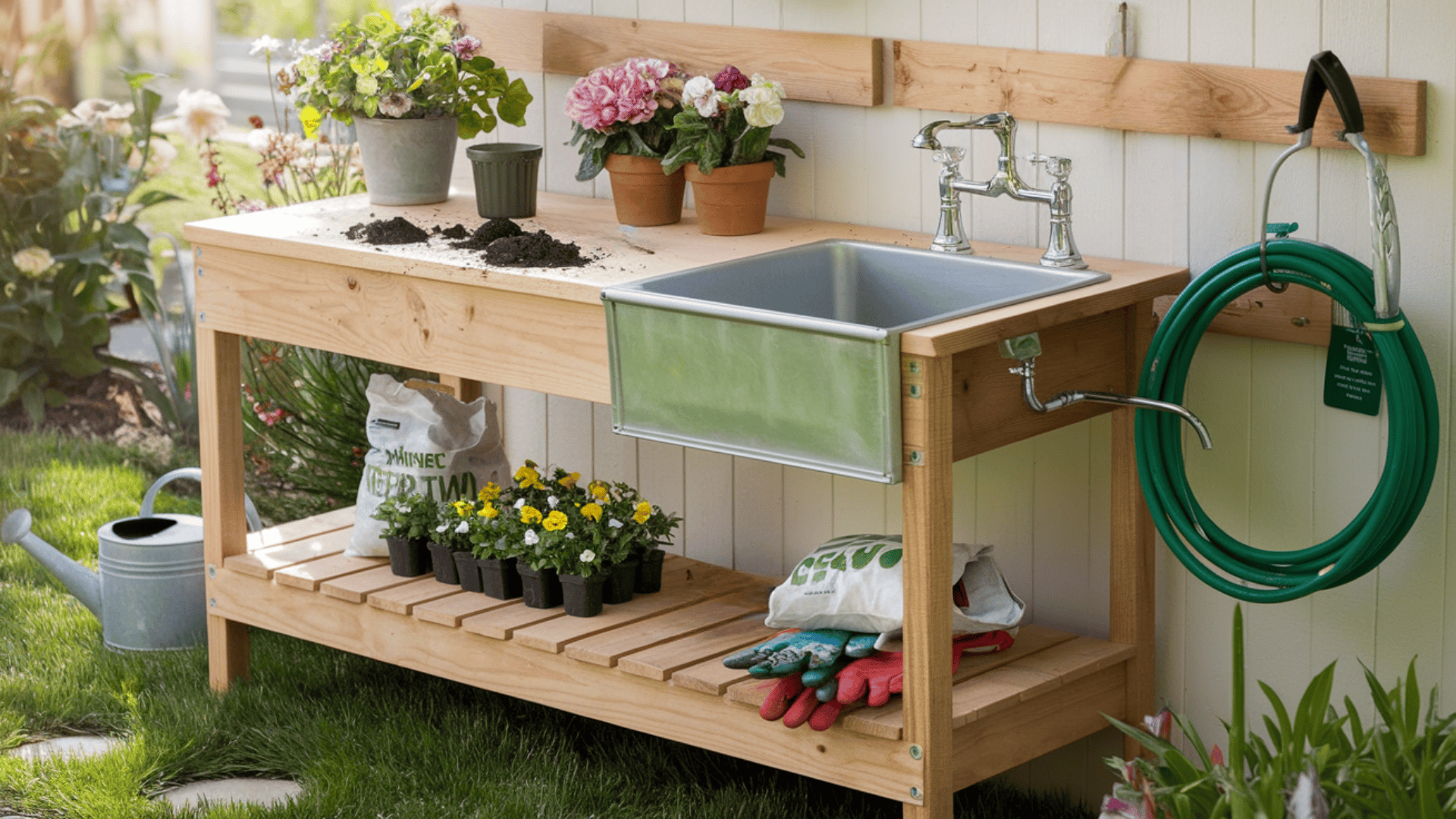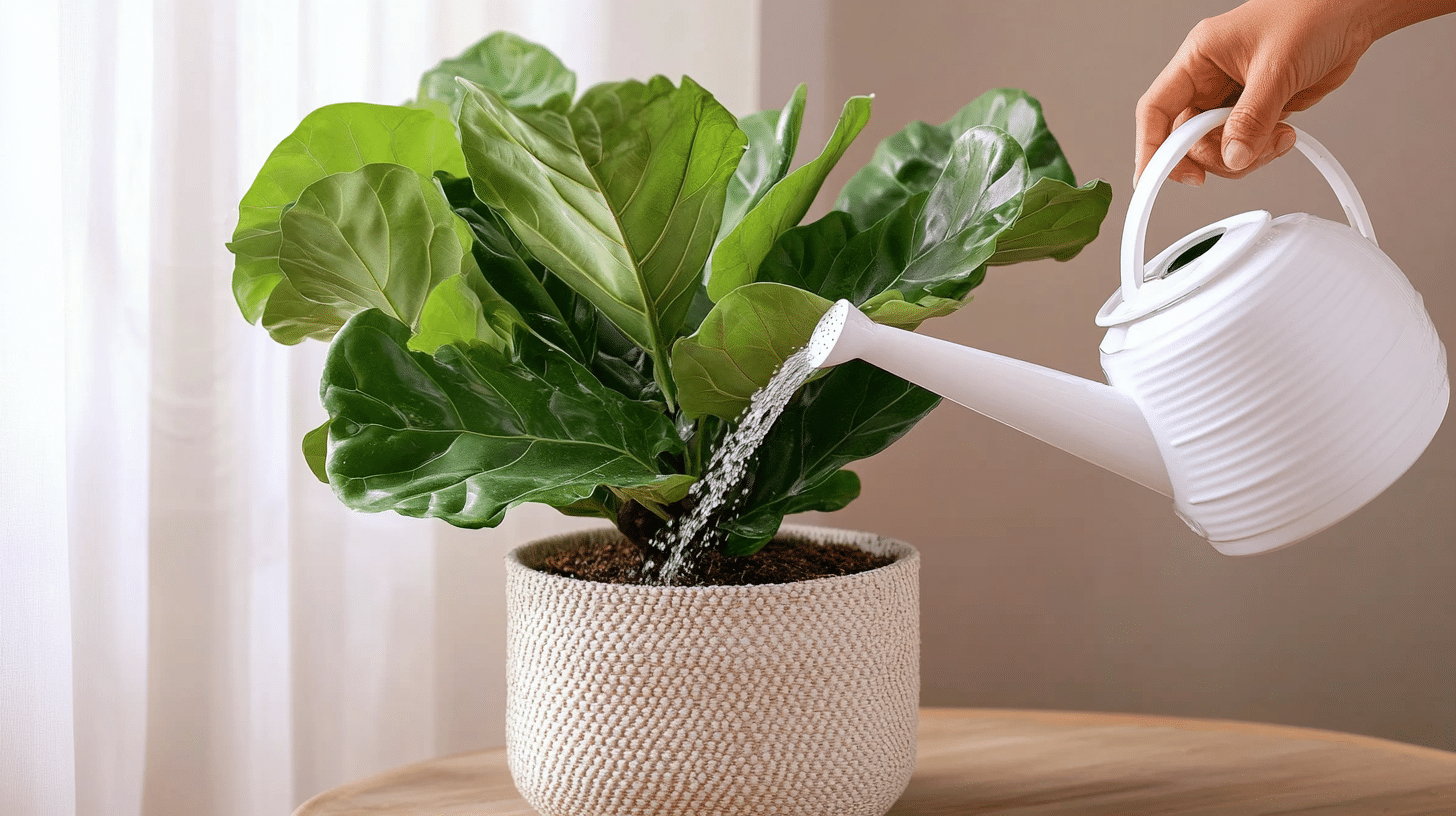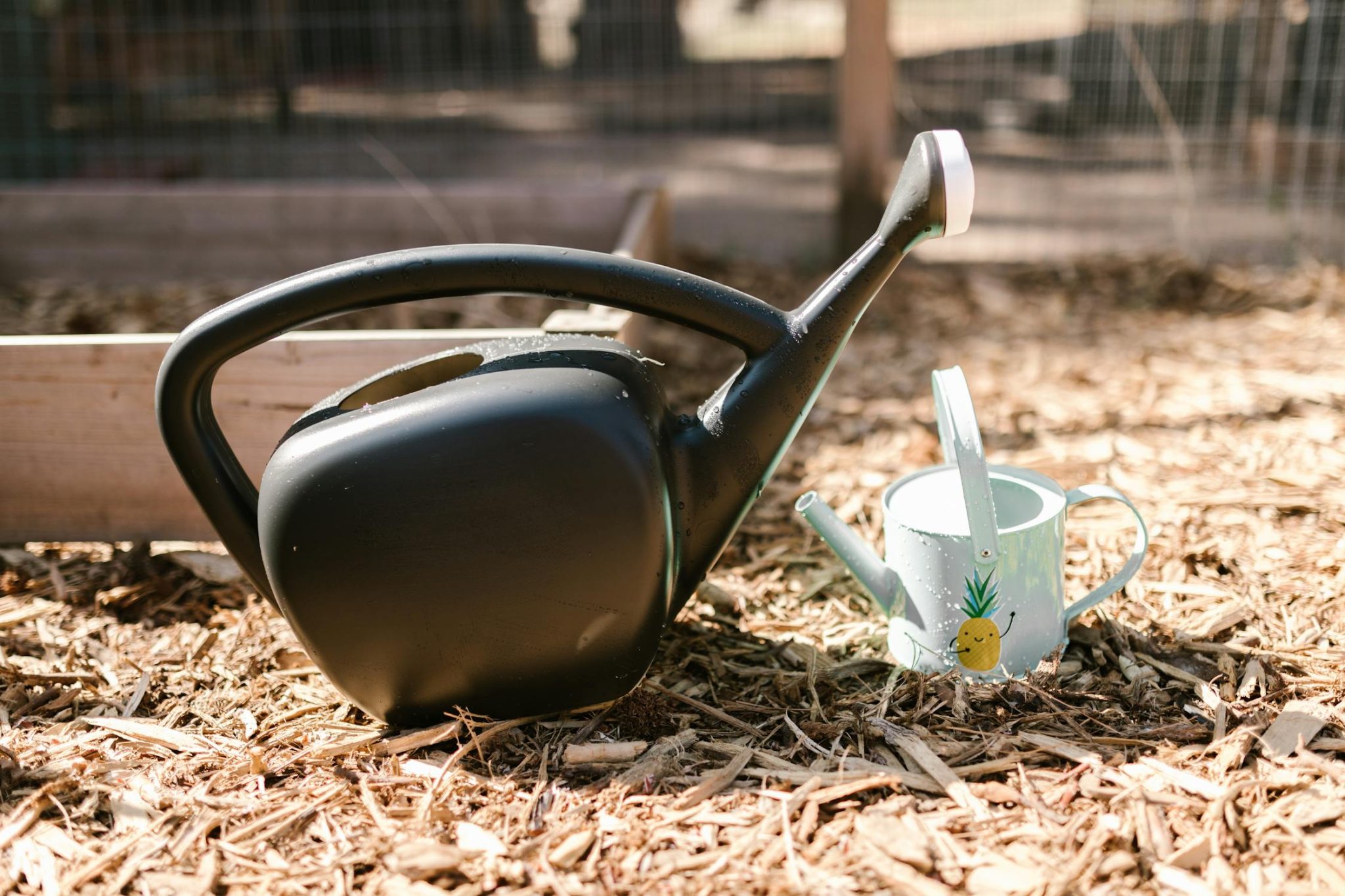Succulent Water Propagation Made Easy: Step-by-Step Guide and Tips
Let’s explore the wonderful world of growing new succulents from a single leaf using water! This easy method of making more plants is a great way to expand your collection without spending money.
Many plant lovers enjoy water-based growing because it’s simple and often works well. You can watch the whole process, from tiny roots appearing to a full new plant forming.
It’s also a smart way to save fallen leaves and make beautiful plant displays. This guide will show you how to grow succulent leaves in water, whether you’re new to plants or have been gardening for years.
Get ready to learn this fun technique and see your succulent family grow!
What Does It Mean to Grow Succulents in Water?
Growing succulents in water is a method of creating new plants from parts of existing ones. Instead of using soil, succulent leaves or stems are placed in water to encourage root growth.
This process, known as water propagation for succulents, allows you to create new plants without potting mix.
The main idea is simple: take a healthy leaf or stem cutting from a succulent plant and place it in or above water.
Over time, the cutting will develop roots and eventually grow into a new plant. This method offers several benefits compared to soil propagation:
- Easy to monitor: You can see root development in water, making it easier to track progress.
- Clean process: There’s no mess from the soil, making it ideal for indoor gardening.
- Reduced risk of overwatering: Succulents in water are less likely to suffer from too much moisture than soil ones.
- Higher success rate: Many gardeners find that water propagation leads to more successful results, especially for beginners.
Water propagation for succulents is becoming increasingly popular among plant enthusiasts. It’s an engaging way to observe succulent growth in water and can be a fun, rewarding experience for gardeners of all skill levels.
Best Types of Succulents to Grow in Water

Some succulents do better in water than others. Here’s a list of types that often do well when grown in water:
- Echeveria: These plants have pretty, rose-shaped leaves and often root easily in water.
- Sedum: Also called stonecrop, many sedum types grow roots quickly in water.
- Crassula: The jade plant is part of this group. Crassulas usually root well in water.
- Kalanchoe: Known for their bright flowers, kalanchoes can grow new roots in water.
- Graptopetalum: Sometimes called ghost plants, these often do well in water.
These plants are good for water growing because they can quickly grow roots in water. They usually have soft, thick leaves that can easily take in water, which helps them develop new roots.
When picking succulents to grow in water, look for ones with thick, fleshy leaves or stems. These store more water and food, giving the cutting a better chance to live while making new roots.
Remember, even though these types often do well, every plant is different. Some might take longer to grow roots, while others might surprise you with how fast they grow. It’s part of the fun of growing succulents in water!
Step-by-Step Guide to Growing Succulents in Water
This step-by-step guide will show you how to propagate succulents in water. It’s a fun DIY project that lets you watch your succulents grow from just a leaf or stem into a whole new plant!
What You’ll Need (Materials and Tools)
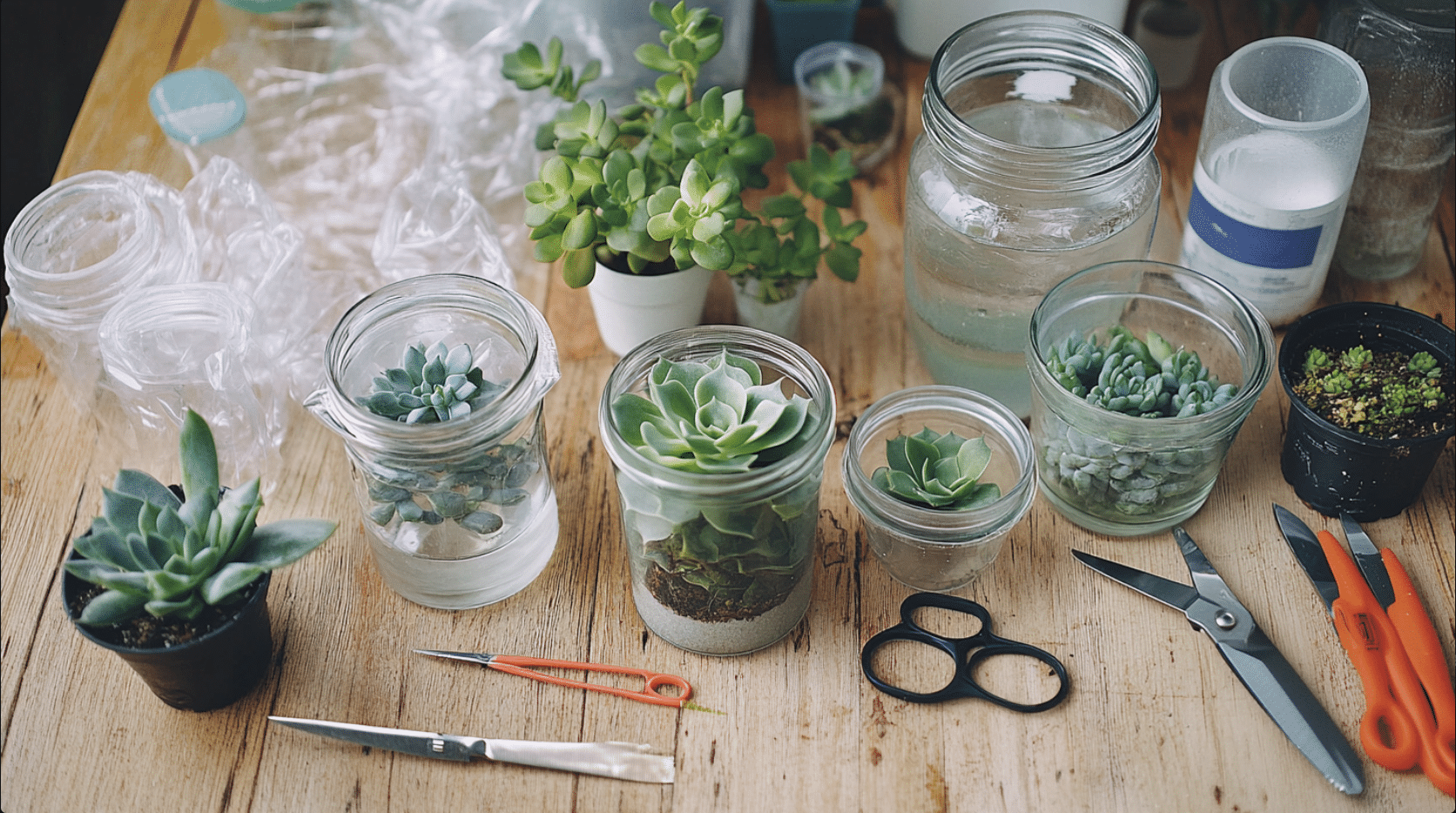
To start growing succulents in water, gather these items:
- Clean glass containers or jars
- Sharp, clean scissors or a knife
- Clean water (rainwater or distilled water is best)
- Plastic wrap or cling film
- Healthy succulent plants for taking cuttings
Some extra tools that can help:
- Small paintbrush for cleaning leaves
- Tweezers for handling small cuttings
- Clear plastic cups for smaller plants
These materials for succulent propagation are easy to find and set up, making it a simple project for anyone who likes plants.
Easy Steps to Follow (DIY)
Step 1

Select and prepare the succulent leaf or stem. Choose a healthy leaf or stem from your succulent. Gently twist the leaf from the stem, ensuring you get a clean break.
Use clean scissors to cut a piece about 2-3 inches long for stem cuttings. Let the cuttings dry for 1-2 days to form a protective layer over the cut area.
Step 2
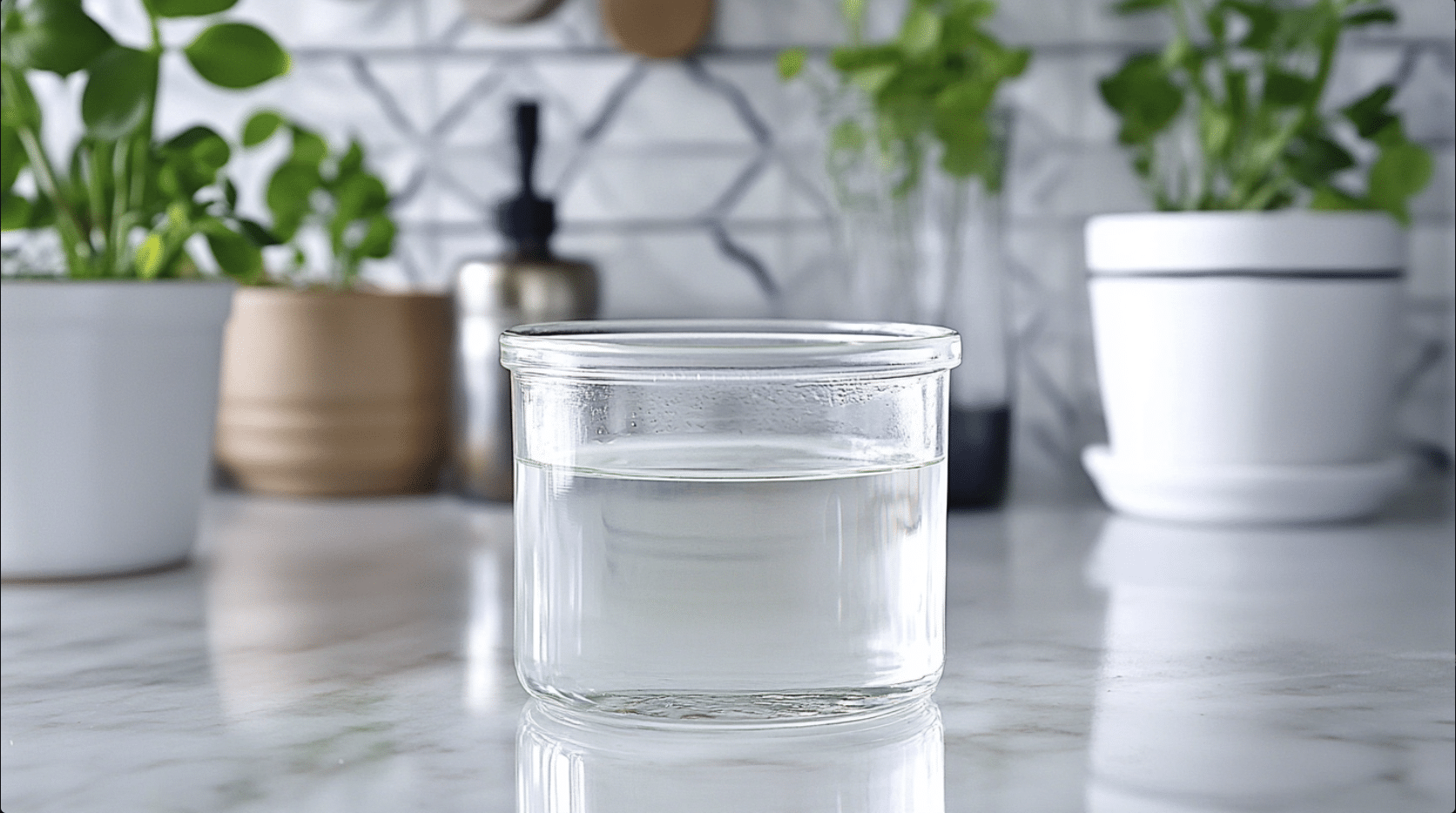
Setting up the container with water. Fill a clean glass container with water, leaving about an inch of space at the top. If you’re using tap water, let it sit out for 24 hours to let any chemicals evaporate.
Step 3
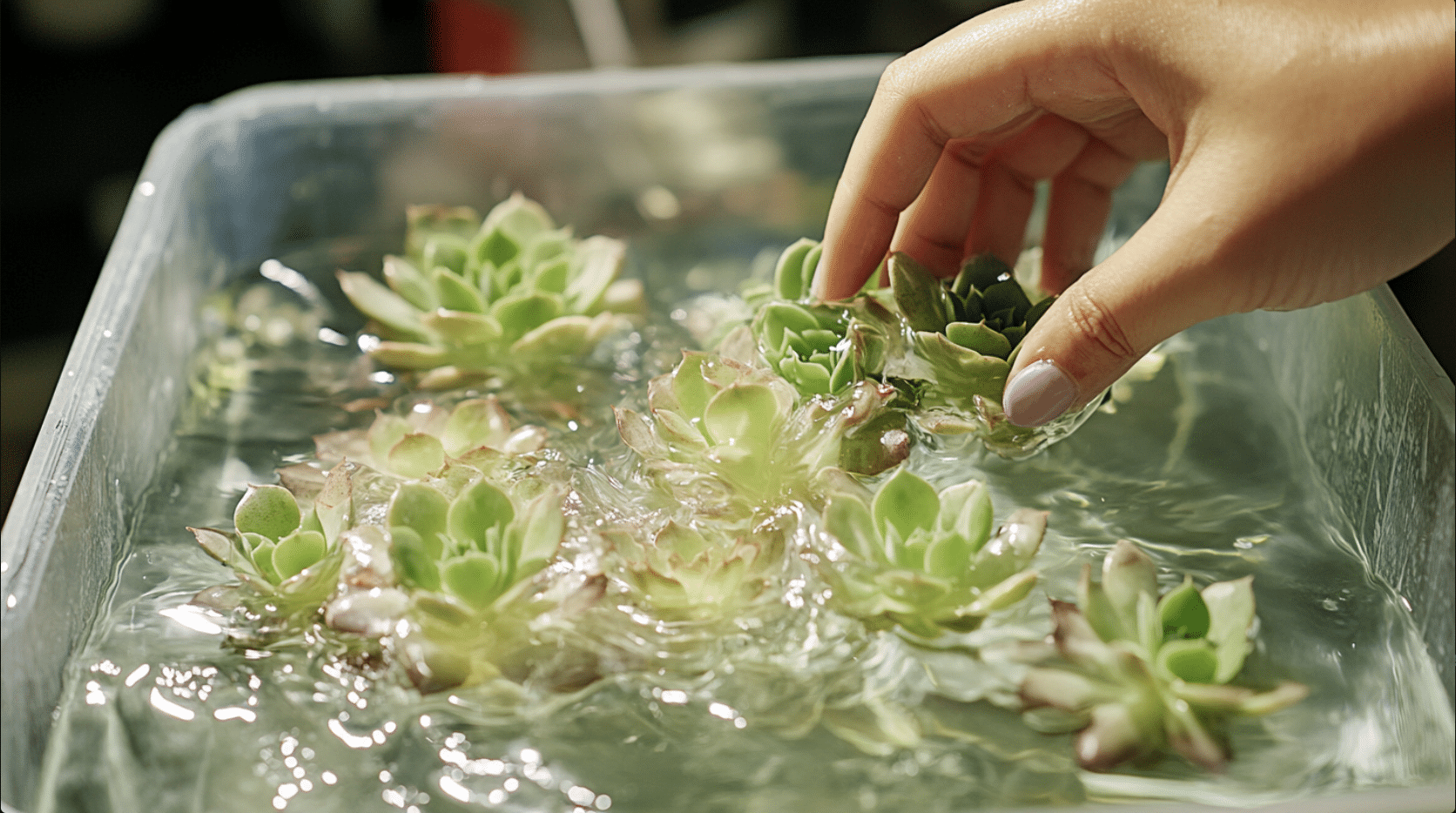
Place the succulent in water and ensure proper conditions. Then, put the dried cuttings in the container so the cut end is just above the water.
Use plastic wrap with holes poked to hold the cuttings in place. To prevent rotting, make sure the leaves don’t touch the water.
Step 4
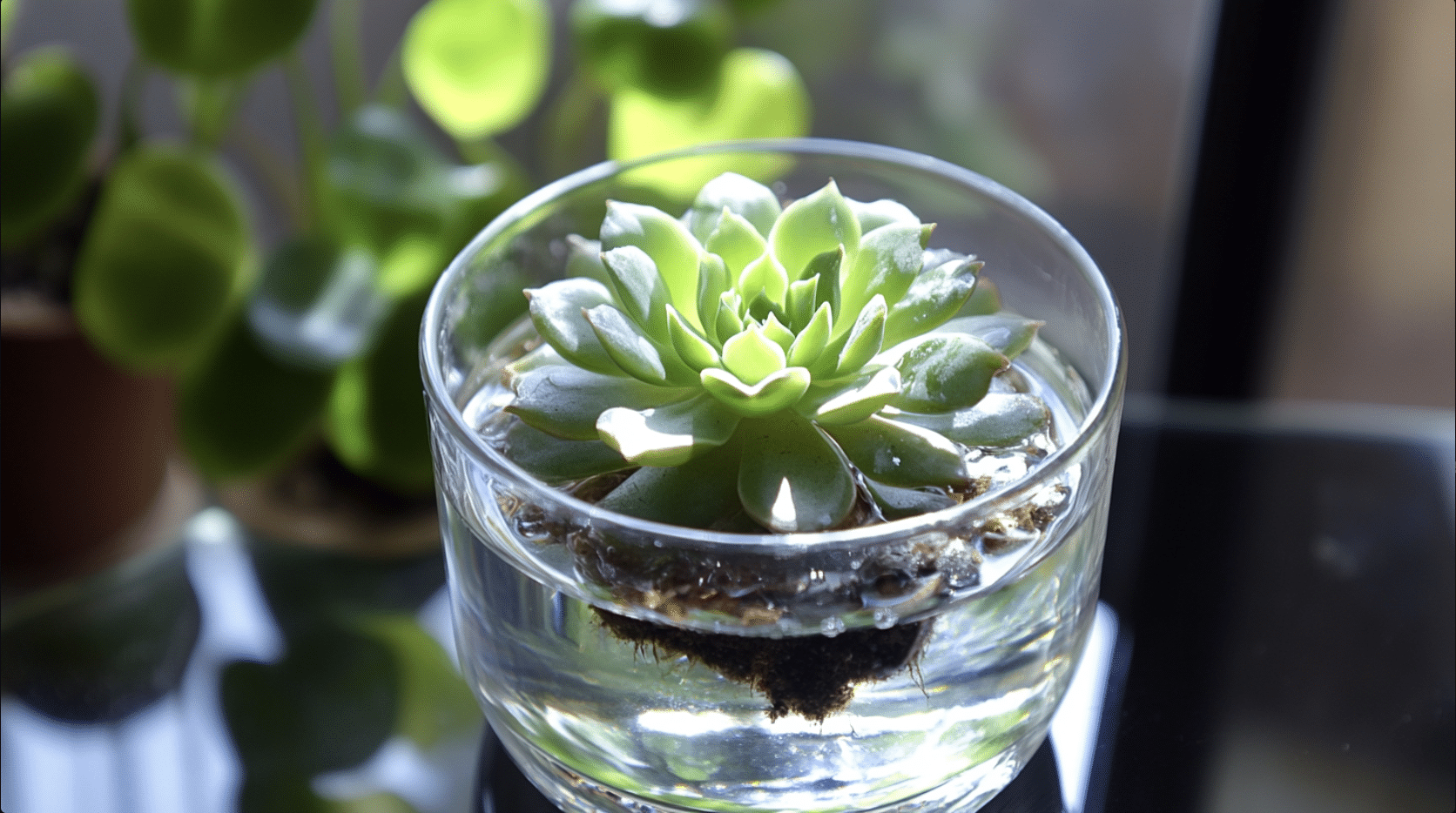
Monitoring growth and transferring to the soil if desired. Place the container in a spot with bright, indirect light. Change the water every 3-5 days to keep it fresh.
After 2-3 weeks, you should see roots growing. Once the roots are about an inch long, you can move the plant to the soil or keep it in water.
For more details, check out the detailed video tutorial by Succulents Box.
Common Problems and How to Fix Them
When growing succulents in water, you might face some issues. Here are common problems and ways to solve them:
1. Root rot
This happens when the plant’s parts stay too wet.
FIX: Make sure leaves and stems don’t touch the water. Only the very bottom should be near the water’s surface.
2. Algae growth
Green stuff growing in the water.
FIX: Change the water often, about every 3-5 days. Use opaque containers or cover clear ones to block light.
3. No roots growing
Sometimes, cuttings don’t develop roots.
FIX: Be patient – it can take weeks. Make sure you’re using healthy cuttings and providing enough light.
4. Leaves turning yellow or brown
This could mean the cutting uses up its stored energy.
FIX: If roots have formed, it’s time to plant the cutting in the soil. If not, it might not be viable.
5. Mold on leaves
White fuzzy growth on leaves.
FIX: Improve airflow around the cuttings. You can use a small fan nearby.
6. Water getting smelly
This means bacteria are growing.
FIX: Change the water more often and clean the container well between changes.
To avoid these problems:
- Use clean tools and containers
- Provide bright, indirect light
- Keep the water clean and fresh
- Don’t let leaves touch the water
- Be patient and watch your plants closely
Knowing these common issues in succulent water propagation and how to fix them will give you a better chance of growing healthy new plants.
Remember, every plant is different, so what works for one might not work for another. Keep trying and learning from each attempt!
How to Take Care of Your Succulents After They Grow
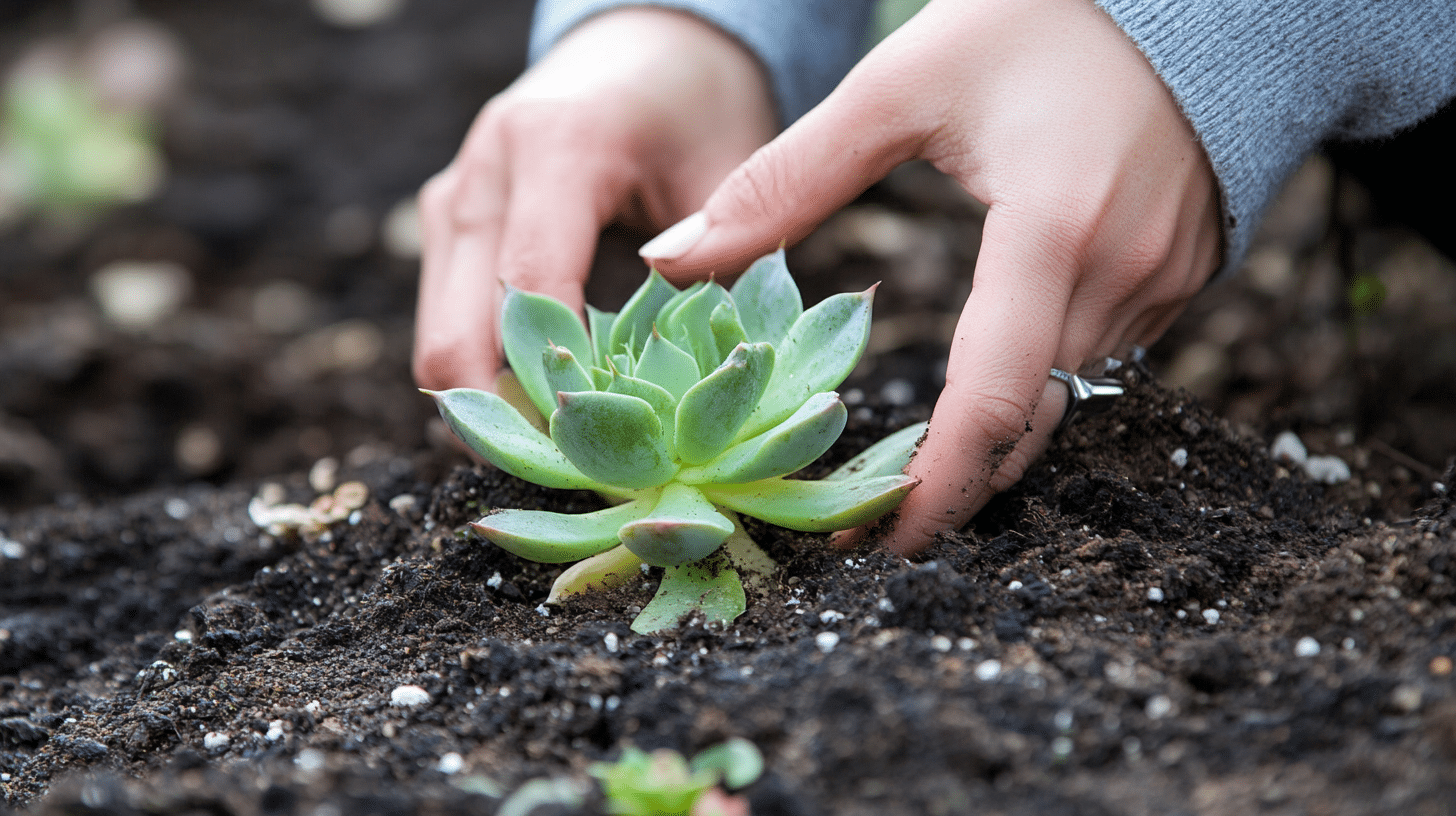
Once your succulents have grown roots in water, it’s time to think about their long-term care. Here’s how to look after your newly grown succulents:
Post-Propagation Care:
- Keep watching the roots: Even after they appear, let them grow more in water. Aim for roots about 1-2 inches long.
- Gradual light exposure: If you’re moving the plant to a sunnier spot, do it slowly over a week to prevent sunburn.
- Clean water: Continue changing the water every few days to keep it fresh.
Transition to Soil:
- Choosing soil: Use a well-draining cactus or succulent mix. Mixing regular potting soil with sand and perlite, you can also make your own.
- Planting: Gently place the rooted cutting in the soil. The top of the roots should be just below the soil surface.
- Watering after planting: Wait a few days before watering to let any damaged roots heal.
Long-Term Care Tips:
- Watering: Water deeply but infrequently. Let the soil dry out completely between waterings.
- Lighting: Most succulents like bright, indirect light. Some can handle direct sun but introduce it gradually.
- Pot choice: Use pots with drainage holes to prevent water from sitting at the bottom.
- Fertilizing: Feed with a balanced, water-soluble fertilizer diluted to half strength monthly during the growing season.
- Temperature: Keep succulents where the temperature stays between 60-80°F (15-27°C).
- Pruning: Remove dead or dying leaves to keep the plant healthy and looking nice.
Remember, caring for propagated succulents is similar to caring for any succulent. The key is not to overwater and to provide enough light. Your new succulents will thrive and grow into beautiful, healthy plants with the right care.
Fun Facts About Propagating Succulents in Water
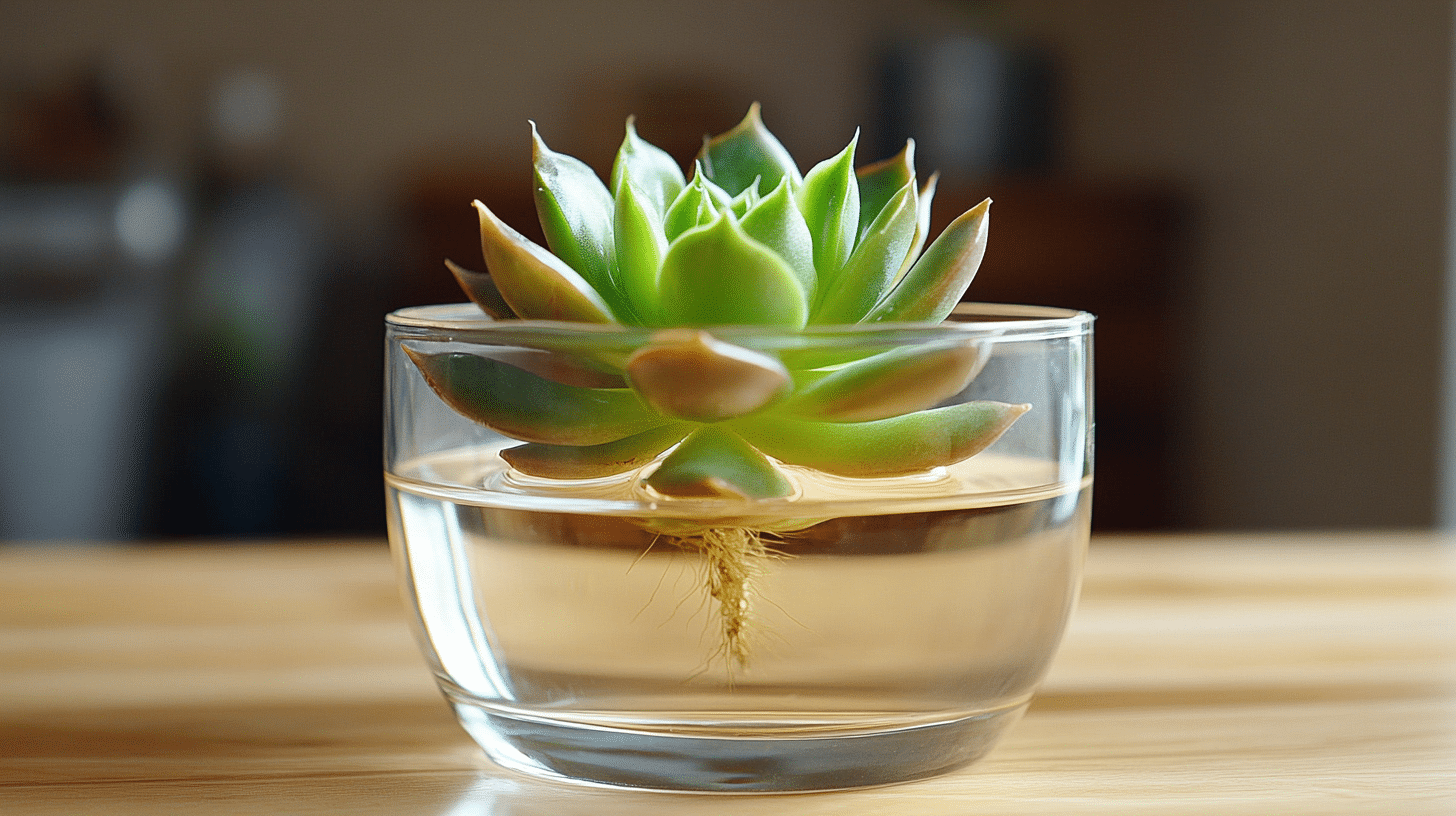
Growing succulents in water is not just useful, it’s also interesting! Here are some fun facts about this process:
- Natural survivors: Succulents can grow in water despite being desert plants. This shows how tough and adaptable they are!
- Faster than seeds: Water propagation is often quicker than growing succulents from seeds, which can take months or even years.
- Clear view: Unlike soil propagation, water lets you see the entire root development process. It’s like having a window into the plant’s growth!
- Endless cycle: A single succulent leaf can potentially grow into a full plant, which can then be used to propagate more plants. It’s a never-ending cycle of plant creation!
- Water memory: Some scientists believe water can hold a ‘memory’ of substances it has contacted. While this is not proven, it’s fun to imagine this might affect plant growth.
Conclusion
Growing succulents in water is a simple, rewarding way to expand your plant collection.
We’ve covered the basics of succulent water propagation, including the best types to use, step-by-step instructions, common problems and solutions, and care tips for your new plants.
This method offers a unique view of root development and can be more successful than soil propagation for many varieties.
Now it’s your turn to try propagating succulents in water! Start with easy-to-grow types like Echeveria or Sedum, and don’t be afraid to experiment.
Remember, patience is key in succulent propagation. We’d love to hear about your experiences – share your successes, challenges, or questions in the comments below.
Happy growing, and may your succulent family flourish!
Frequently Asked Questions (FAQs)
Can All Succulent Species Be Propagated in Water?
No, not all succulents can be propagated in water. Many species prefer soil for optimal growth and rooting.
What Type of Water Should I Use?
Use filtered or distilled water to avoid chemicals like chlorine, which can harm the succulents’ delicate roots.
Can I Leave Succulents in Water Permanently?
No, succulents should not be left in water permanently. They grow best in soil after roots have developed.


